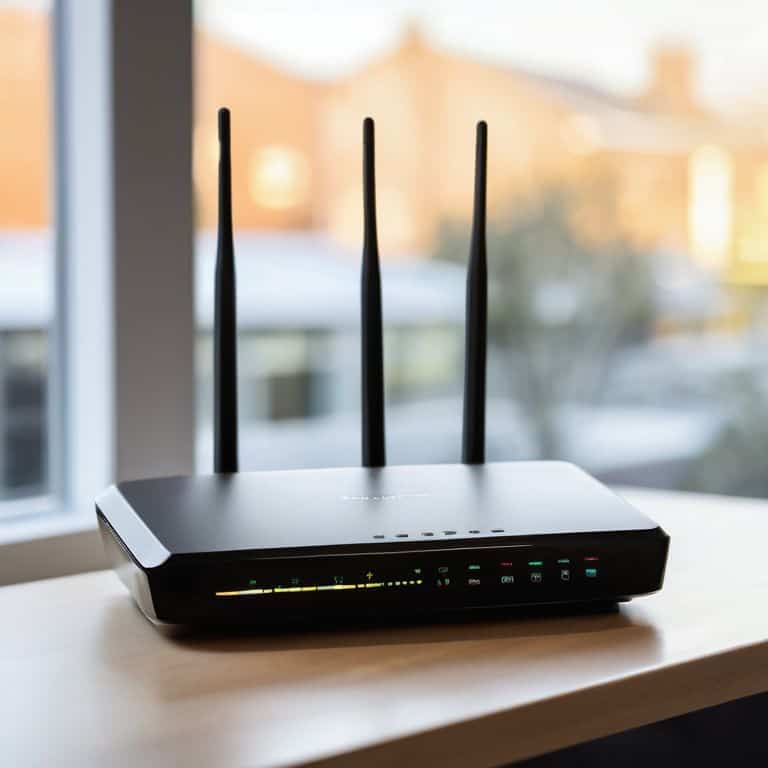I still remember the days when I had to decide on the WiFi frequency for our new smartphone designs – it was always a debate about the difference between 2.4 ghz and 5 ghz wifi. As a former hardware engineer, I’ve seen how this choice can significantly impact the performance of our devices. But for many of us, this decision is shrouded in mystery, leaving us to wonder which frequency is truly better. We’re often faced with the dilemma of choosing between these two frequencies without fully understanding their implications.
As someone who’s spent years designing the complex chips inside our devices, I’m excited to share my no-nonsense take on this topic. In this article, I’ll break down the key factors that distinguish these two frequencies, and provide you with a clear understanding of how they work. My goal is to empower you with the knowledge to make informed decisions about your WiFi setup, and to demystify the science behind these frequencies. By the end of this article, you’ll have a solid grasp of the differences between 2.4 GHz and 5 GHz WiFi, and you’ll be able to make choices that are right for you, without being misled by technical jargon or hype.
Table of Contents
2.4 GHz WiFi

2.4 GHz WiFi is a type of wireless network frequency that operates on a specific radio wave band, allowing devices to connect to the internet. Its core mechanism involves transmitting data through these radio waves, and its main selling point is its ability to penetrate solid objects, such as walls, making it a reliable choice for homes and offices. The 2.4 GHz frequency is also widely supported by most devices, making it a versatile option for users.
As someone who’s worked with electronics, I can appreciate the significance of 2.4 GHz WiFi in our daily lives. Think of it like a plumbing system, where data is the water flowing through pipes (or in this case, radio waves). Just as a well-designed plumbing system ensures water reaches every faucet, a strong 2.4 GHz WiFi signal ensures a stable internet connection throughout your space. This is especially important in today’s world, where we rely on the internet for everything from work to entertainment. By understanding how 2.4 GHz WiFi works, we can better appreciate the complexity of our digital lives.
5 GHz WiFi

5 GHz WiFi is a higher frequency wireless network that offers faster data transfer rates and lower latency compared to its 2.4 GHz counterpart. Its core mechanism involves using a shorter wavelength to transmit data, resulting in a more direct and efficient connection. The main advantage of 5 GHz WiFi is its ability to support more devices and handle bandwidth-intensive activities, such as online gaming and video streaming.
In my experience as a tech journalist, I’ve seen how 5 GHz WiFi can revolutionize the way we experience the internet. Imagine being able to seamlessly stream your favorite shows or play online games without any lag or buffering. This is made possible by the faster data transfer rates of 5 GHz WiFi, which enable a more responsive and immersive online experience. By grasping the fundamentals of 5 GHz WiFi, we can unlock new possibilities for our digital lives and take advantage of the latest technologies that rely on this frequency.
Head-to-Head Comparison of 2.4 GHz and 5 GHz WiFi
| Feature | 2.4 GHz WiFi | 5 GHz WiFi |
|---|---|---|
| Frequency | 2.4 GHz | 5 GHz |
| Range | Longer range, better penetration through walls and obstacles | Shorter range, less penetration through walls and obstacles |
| Interference | More prone to interference from other devices | Less prone to interference from other devices |
| Speed | Typically slower, up to 600 Mbps | Typically faster, up to 1300 Mbps |
| Device Compatibility | Widely supported by older devices | Less supported by older devices, but widely supported by newer devices |
| Best For | General browsing, email, and social media | Online gaming, video streaming, and high-bandwidth applications |
| Security | Both have similar security features, but 5 GHz is less vulnerable to interference-based attacks | Both have similar security features, but 5 GHz is less vulnerable to interference-based attacks |
Wifi Wizardry Uncovered

Understanding the WiFi frequency is crucial because it directly affects our internet experience. The difference between 2.4 GHz and 5 GHz WiFi is not just about numbers; it’s about how these frequencies interact with our environment. Think of it like water flowing through pipes – the frequency is like the pipe size, and the data is like the water. A smaller pipe (2.4 GHz) might be more prone to congestion, while a larger pipe (5 GHz) can handle more water, but might have limitations in terms of distance.
When we compare the two frequencies head-to-head, we see that 2.4 GHz has a longer range, but is more susceptible to interference. On the other hand, 5 GHz has a shorter range, but offers faster speeds and less interference. This means that if you’re in a small apartment with few devices, 5 GHz might be the better choice. However, if you’re in a large house with many devices, 2.4 GHz might be more suitable.
In conclusion, when it comes to WiFi wizardry, 5 GHz is the clear winner for those who value speed and can position their router strategically. However, 2.4 GHz still has its advantages and might be the better choice for those who prioritize coverage. Ultimately, understanding the difference between these two frequencies can help you make an informed decision and optimize your WiFi experience.
Key Takeaways: 2.4 GHz vs 5 GHz WiFi
Understanding the difference between 2.4 GHz and 5 GHz WiFi frequencies can significantly improve your wireless network’s performance and reliability, much like how choosing the right pipe size in plumbing ensures efficient water flow
In simple terms, 2.4 GHz offers a longer range but is more prone to interference, whereas 5 GHz provides faster data transfer rates but has a shorter range, making your device’s WiFi antenna like a specialized tool that needs the right environment to work optimally
By grasping how these two frequencies work and interact with your devices and environment, you can make informed decisions about your wireless network setup, essentially becoming the master plumber of your digital world, where the water is data and the pipes are WiFi signals
Unraveling the WiFi Spectrum
The difference between 2.4 GHz and 5 GHz WiFi is like the difference between a busy highway and a quiet neighborhood street – both will get you where you need to go, but one is much more prone to congestion and interference, while the other offers a faster, more direct route to your destination.
Chloe Brennan
The Final Verdict: Which Should You Choose?
As we’ve explored the key differences between 2.4 GHz and 5 GHz WiFi frequencies, it’s clear that each has its own set of advantages and disadvantages. The 2.4 GHz frequency offers better range and wall penetration, making it suitable for larger homes or offices with thicker walls. On the other hand, the 5 GHz frequency provides faster data transfer rates and less interference, ideal for applications that require high bandwidth, such as online gaming or video streaming.
So, who wins? Ultimately, the best choice depends on your specific needs. If you’re a heavy user who requires fast and reliable connectivity for applications like gaming or video editing, the 5 GHz frequency is the way to go. However, if you’re looking for a more stable and widespread connection for general browsing, email, and social media, the 2.4 GHz frequency might be the better option. As a former hardware engineer, I recommend assessing your specific use case and choosing the frequency that best fits your needs.
Frequently Asked Questions
How does the range of 2.4 GHz WiFi compare to 5 GHz in a typical home setup?
Think of WiFi signals like water flowing through hoses – 2.4 GHz is like a longer, thicker hose that can reach farther, while 5 GHz is a shorter, thinner hose that’s better for shorter distances with less interference. In a typical home, 2.4 GHz can cover more area, but 5 GHz is better for devices close to the router.
Can devices automatically switch between 2.4 GHz and 5 GHz frequencies, or does it require manual configuration?
So, can devices automatically switch between frequencies? Yes, many modern devices and routers support a feature called ‘dual-band’ or ‘band steering’, which allows them to seamlessly switch between 2.4 GHz and 5 GHz frequencies without needing manual configuration, kind of like how your car’s transmission shifts gears smoothly.
Are there any significant security differences between using 2.4 GHz and 5 GHz WiFi networks?
From a security standpoint, the difference between 2.4 GHz and 5 GHz WiFi lies in their signal range and interference. Think of it like a plumbing system: 2.4 GHz is like a longer, more prone-to-leaks hose, while 5 GHz is a shorter, more secure one. Generally, 5 GHz offers better security due to its shorter range and less interference, making it harder for hackers to tap in.








